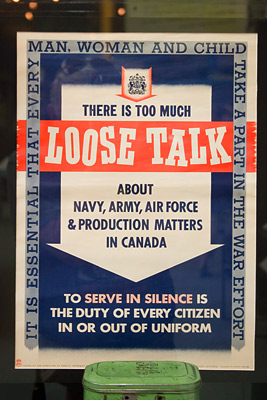Ken's Journal Pictou, NS |
| In their words, Nova Scotia Museum is the corporate name for a decentralized collection of museum sites spread throughout the province - it consists of 27 separate museums, including over 200 historic buildings, living history sites, vessels, specialized museums and close to a million artifacts and specimens. This museum system is responsible for collecting, researching and documenting Nova Scotia's natural and human history, and then providing exhibits, programs, buildings and publications about Nova Scotia's natural and human history. You can find a list of their 27 museums here and from there visit the rest of their web site. |
| This is the Nova Scotia Museum of Industry. As the name suggests, the purpose of the museum is to show the industrial history of the province. A number of the exhibits are designed for children and are "hands-on." Some of those exhibits demonstrate the power of falling water by powering water-wheels of various configurations - under-shot, over-shot and turbine. The kids move levers to pump water up a tube and then open a gate to let the water fall to power the water-wheels. Other exhibits expose children to the concept of pulleys for multiplying the effort you apply to a rope hoist. | |
In any case, this is one of the restored steam engines from the early era. This Nova Scotia museum, over all the others I visited, seemed to have the best restorations and presentation. |
An early stationary steam engine. This is a Davies engine made in 1866. It's actually two coupled engines making a total of 36 hp. Amazingly, it was used up until 1995 to haul boats up into a slip for maintenance! With the winch, not shown, the whole contraption weighed 12 tons! |
An early "portable" steam engine used to power a variety of stationary attachments. The man is flat cardboard and is not functional. |
This one is an early gasoline powered stationary engine. Built sometime before 1920 by Acadia Stationary Engines, this one put out a whopping 6 HP. |
An early "steam-shovel" - although this one was gasoline powered. |
Another steam engine. This one was used in the local Albion Coal Mines. The museum is built on the site of the mnes. |
I'll date myself. I remember "Reddy Kilowatt" a mascot of the local Washington DC power company, PEPCO. According to a google search, Reddy Kilowatt debuted in 1926 from the imagination of the General Manager of the Alabama Power Company. I vaguely remember the washing machine too. Hmmm. |
Now here's something that every newspaper in the US today should pay attention to. This is a poster from WWII. |
The first Volvo produced on the first automotive assembly line in Canada. |
Hair-dressing contraptions from the 1930s. |
"Half the fun of the travel is the esthetic of lostness." -- Ray Bradbury |
Page 20 |









